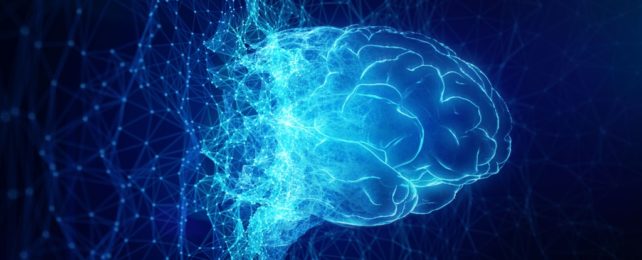Our brains do a fantastic job of acting as master control centers for our sacks of flesh if you stop and think about it – which again will call on your brain. Now researchers have discovered more about how the brain fixes long-term memories in its storage slots.
The new study looks at the 'zone of uncertainty' or 'zona incerta' inside the brain: we don't know much about it, but we do know that it seems to handle memory formation in tandem with the neocortex, the largest part of the cerebral cortex.
In learning tests on mice, the researchers analyzed how connections between the zona incerta and the neocortex operated, paying particular attention to the synapses (the connections between neurons) and inhibition (the rewiring of neuron activity).
"The results were striking," says neuroscientist Anna Schroeder from the University of Freiburg in Germany. "While about half of the synapses developed stronger positive responses during learning, the other half did exactly the opposite."
"In effect, what we observed was thus a complete redistribution of inhibition within the system due to learning."
When the brain forms memories, it combines both 'bottom-up' signals coming in from the environment and 'top-down' signals that it generates itself; these top-down signals might be influenced by our current goals or past experiences, for example.
The zona incerta deals in a less common type of top-down signal called long-range inhibitory pathways. Top-down signals usually light up or excite neural pathways, whereas these types are inhibitors, suppressing and blocking off these routes as needed.
Varying the strengths of synapses and chains of neurons in the brain is essential for forming memories, helping the brain assign value to what we're going through: everything that happens to us is somewhere on the memorable scale.
These tests show the zona incerta encoding previous experiences in a special bidirectional way that hasn't been seen before. Further tests where the zona incerta pathways were blocked off resulted in impairments in learning in the mice.
"This connectivity implies that an activation of the zona incerta should result in a net excitation of neocortical circuits," says Schroeder.
"However, combining this with the redistribution of inhibition that we see with learning shows that this pathway likely has even richer computational consequences for neocortical processing."
This is all relatively high-level neuroscience, but the conclusion is that we now know more about how a mysterious brain region influences memory and learning ability – and it does it in a peculiar and unexpected way that's of particular interest to scientists.
As more studies investigate the role of the zona incerta, we're starting to understand how much of an influence it has: it's now been linked to sleeping and feeding and pain and anxiety.
Moreover, the zone is regularly targeted in treatments for Parkinson's disease, although scientists still aren't sure why it helps with the symptoms. Future research like this one should help solve that mystery and several others.
"Ultimately, this study will hopefully also inspire other researchers to keep exploring the role of long-range inhibition in regulating neocortical function, both from the zona incerta and from additional, yet-to-be-identified sources," says neuroscientist Johannes Letzkus from the University of Freiburg.
The research has been published in Neuron.
